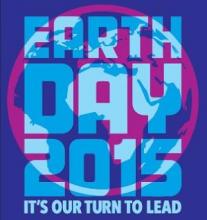As today, April 22, is Earth Day 2015, I wanted to take a moment to share some of my favorite stories that show how researchers are leveraging Ohio Supercomputer Center resources to better understand Mother Earth and mankind’s relationship with her.
In 2002, Ohio policymakers rolled out the Ohio Third Frontier initiative, the state’s “commitment to create new technology-based products, companies, industries and jobs.” As part of the research done to establish the program, OTF officials commissioned two studies. A 2005 Deloitte study gave state economic development officials “insight, analysis, and strategic tools to help businesses compete more efficiently in an increasingly global marketplace.” A 2006 Battelle report “matched the state’s core research competencies to technology platforms that could be used to grow the state and regional economies.”
OSC leadership matched the center’s computational strengths to a few key areas touted by the reports: the BioSciences, Advanced Materials and Energy & Environment. Subsequent investments in new resources at OSC focused on supporting research in those three broad fields. These labels also have been used to categorize stories chronicled in the Center’s annual Research Report, along with a fourth section, Research Landscape, which highlights discoveries and innovations in many other fields of science around the state.
An Energy & Environment section header in a recent edition of the Research Report summarized, “The solution of complex global energy and environmental sustainability issues will increase demand for modeling and simulation capabilities. The Ohio Supercomputer Center is supporting ambitious researchers who are investigating various aspects of these challenges by providing powerful resources for researchers who today find themselves in the throes of a worldwide Green Revolution.”
Here are snippets and links from just a few of my favorite Energy & Environment stories over the last few years:
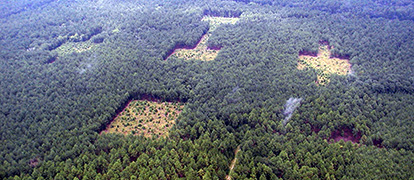 A team of field ecologists led by Dr. Gil Bohrer at The Ohio State University found that woodland corridors connecting patches of endangered plants not only increase dispersal of seeds from one patch to another, but also create wind conditions that can spread the seeds for much longer distances. Data from sensors and seed traps were analyzed through a high-resolution atmospheric model that Bohrer had developed on OSC systems.
A team of field ecologists led by Dr. Gil Bohrer at The Ohio State University found that woodland corridors connecting patches of endangered plants not only increase dispersal of seeds from one patch to another, but also create wind conditions that can spread the seeds for much longer distances. Data from sensors and seed traps were analyzed through a high-resolution atmospheric model that Bohrer had developed on OSC systems.
 For generations, farmers have applied biosolids to their fields to improve soil fertility, leading scientists to examine its effects on human health. A University of Toledo research team led by Dr. Ashok Kumar ran mathematical models OSC systems in order to simulate the dispersion of particulate matter and gases emitted by the biosolids in the fields.
For generations, farmers have applied biosolids to their fields to improve soil fertility, leading scientists to examine its effects on human health. A University of Toledo research team led by Dr. Ashok Kumar ran mathematical models OSC systems in order to simulate the dispersion of particulate matter and gases emitted by the biosolids in the fields.
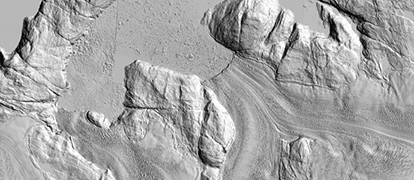 Ohio State’s Dr. Ian Howat led a team of researchers in constructing a first-of-its-kind, time-stamped, high-resolution digital surface model of the Greenland Ice Sheet. With record melting in recent years, the ice sheet is likely to contribute substantially to sea level rise. The model should provide scientists with a major data set for polar and climate-change related studies.
Ohio State’s Dr. Ian Howat led a team of researchers in constructing a first-of-its-kind, time-stamped, high-resolution digital surface model of the Greenland Ice Sheet. With record melting in recent years, the ice sheet is likely to contribute substantially to sea level rise. The model should provide scientists with a major data set for polar and climate-change related studies.
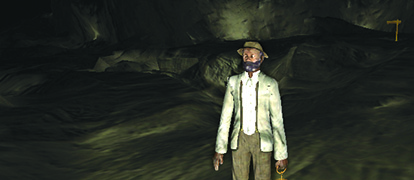 College geoscience students with mobility impairments soon will be able to explore a computer simulation of a large cave system to meet degree requirements of field-based learning experiences. A research team led by visualization experts at OSC and Dr. Christopher Atchison at Georgia State University is creating an interactive, virtual field trip through a portion of Kentucky’s famous Mammoth Cave. The project will develop an alternative to the physically demanding conditions normally encountered during field study.
College geoscience students with mobility impairments soon will be able to explore a computer simulation of a large cave system to meet degree requirements of field-based learning experiences. A research team led by visualization experts at OSC and Dr. Christopher Atchison at Georgia State University is creating an interactive, virtual field trip through a portion of Kentucky’s famous Mammoth Cave. The project will develop an alternative to the physically demanding conditions normally encountered during field study.
 While non-polluting energy sources such as hydrogen are desirable over their fossil-fuel counterparts, most hydrogen production processes also rely upon fossil fuels. Therefore, Dr. Gerardine Botte at Ohio University is studying a new technology to produce hydrogen by the electrochemical oxidation of urea from animals and humans, which also could begin to address waste remediation issues.
While non-polluting energy sources such as hydrogen are desirable over their fossil-fuel counterparts, most hydrogen production processes also rely upon fossil fuels. Therefore, Dr. Gerardine Botte at Ohio University is studying a new technology to produce hydrogen by the electrochemical oxidation of urea from animals and humans, which also could begin to address waste remediation issues.
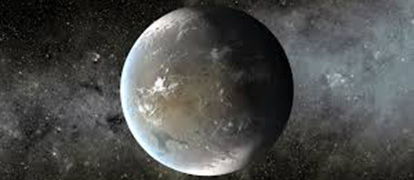 The earth and other celestial bodies are continually bombarded by extremely fast-moving, subatomic particles known as cosmic rays, gamma rays and neutrinos. A study led by Ohio State’s Dr. Amy Connolly leveraged Ohio Supercomputer Center resources to evaluate the complementarity of cosmic rays and neutrinos as a source of information about the universe’s most extreme particle accelerators.
The earth and other celestial bodies are continually bombarded by extremely fast-moving, subatomic particles known as cosmic rays, gamma rays and neutrinos. A study led by Ohio State’s Dr. Amy Connolly leveraged Ohio Supercomputer Center resources to evaluate the complementarity of cosmic rays and neutrinos as a source of information about the universe’s most extreme particle accelerators.

